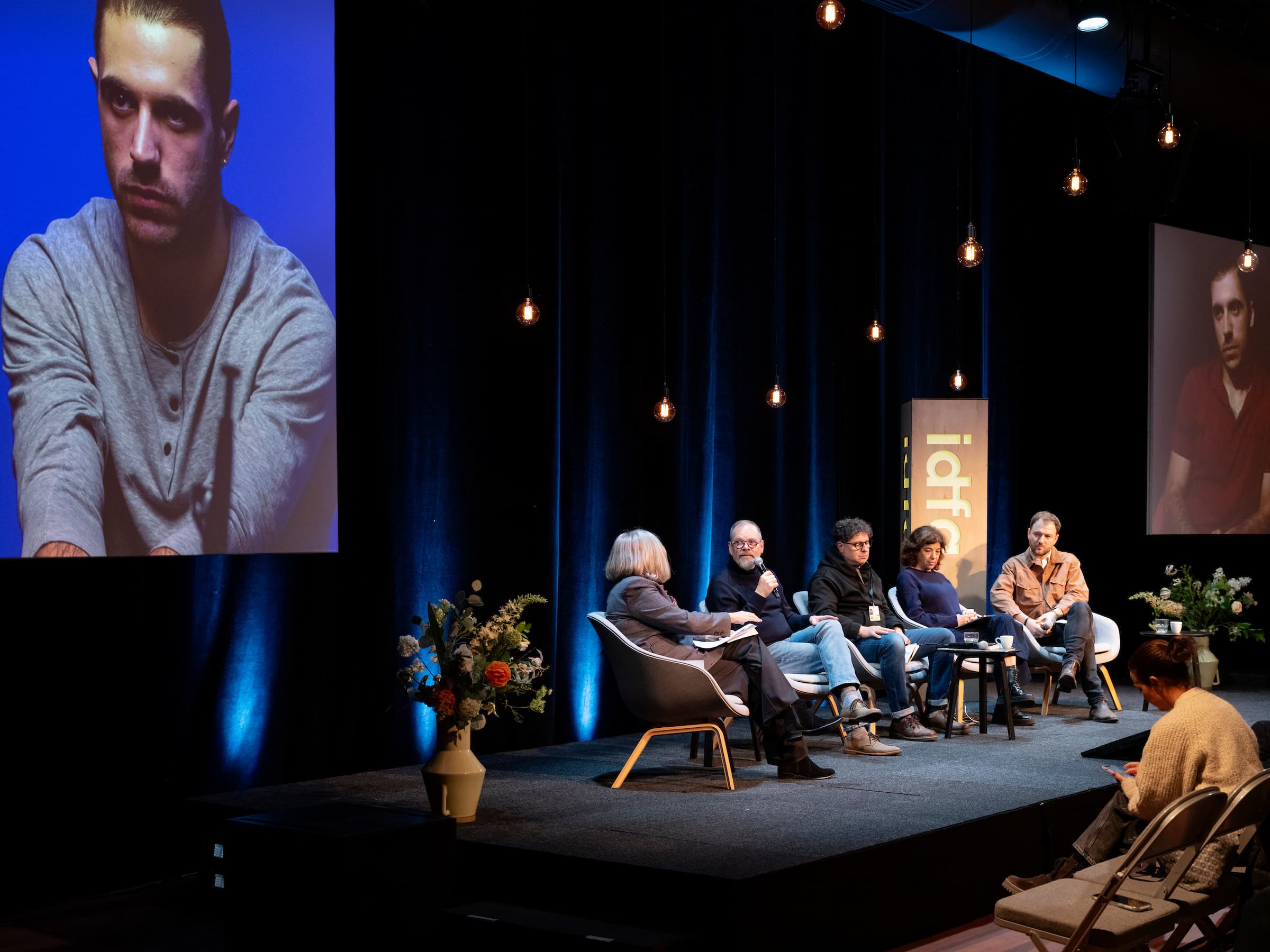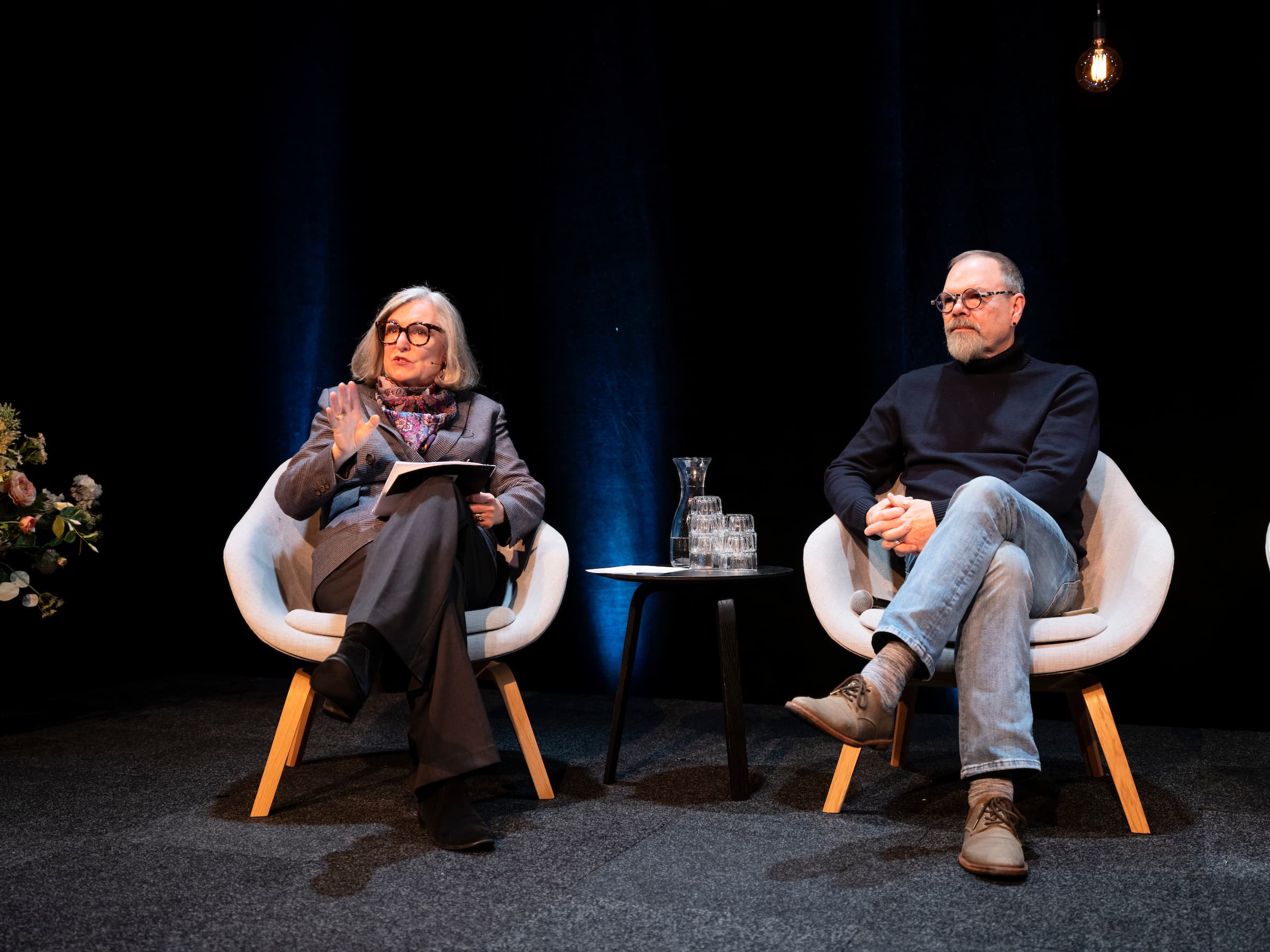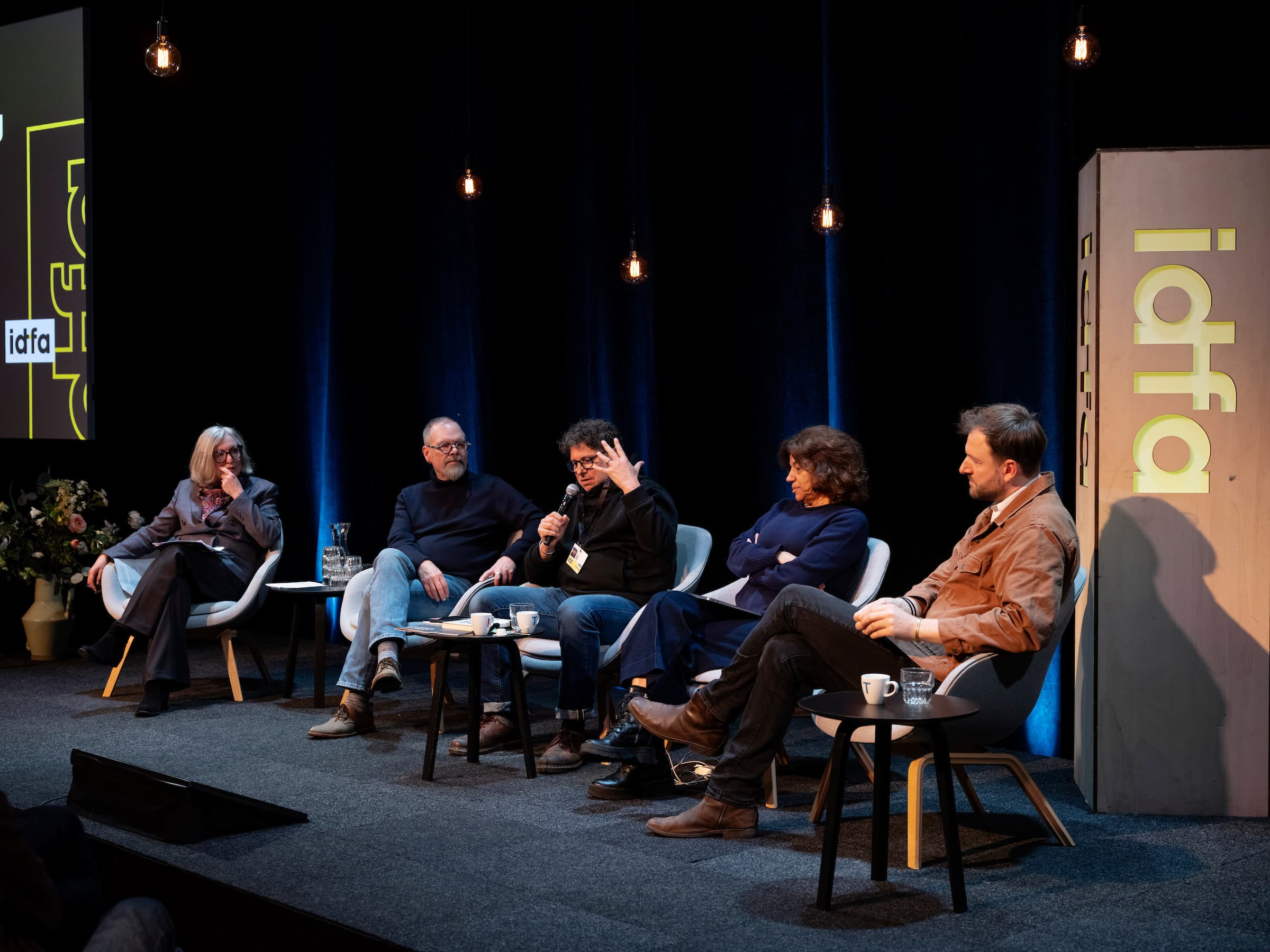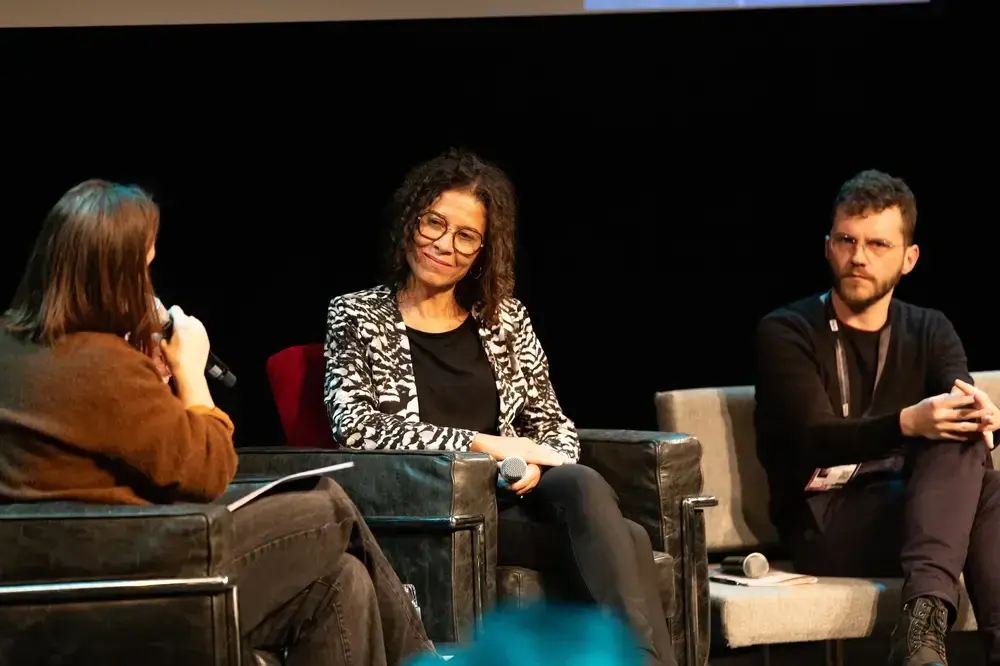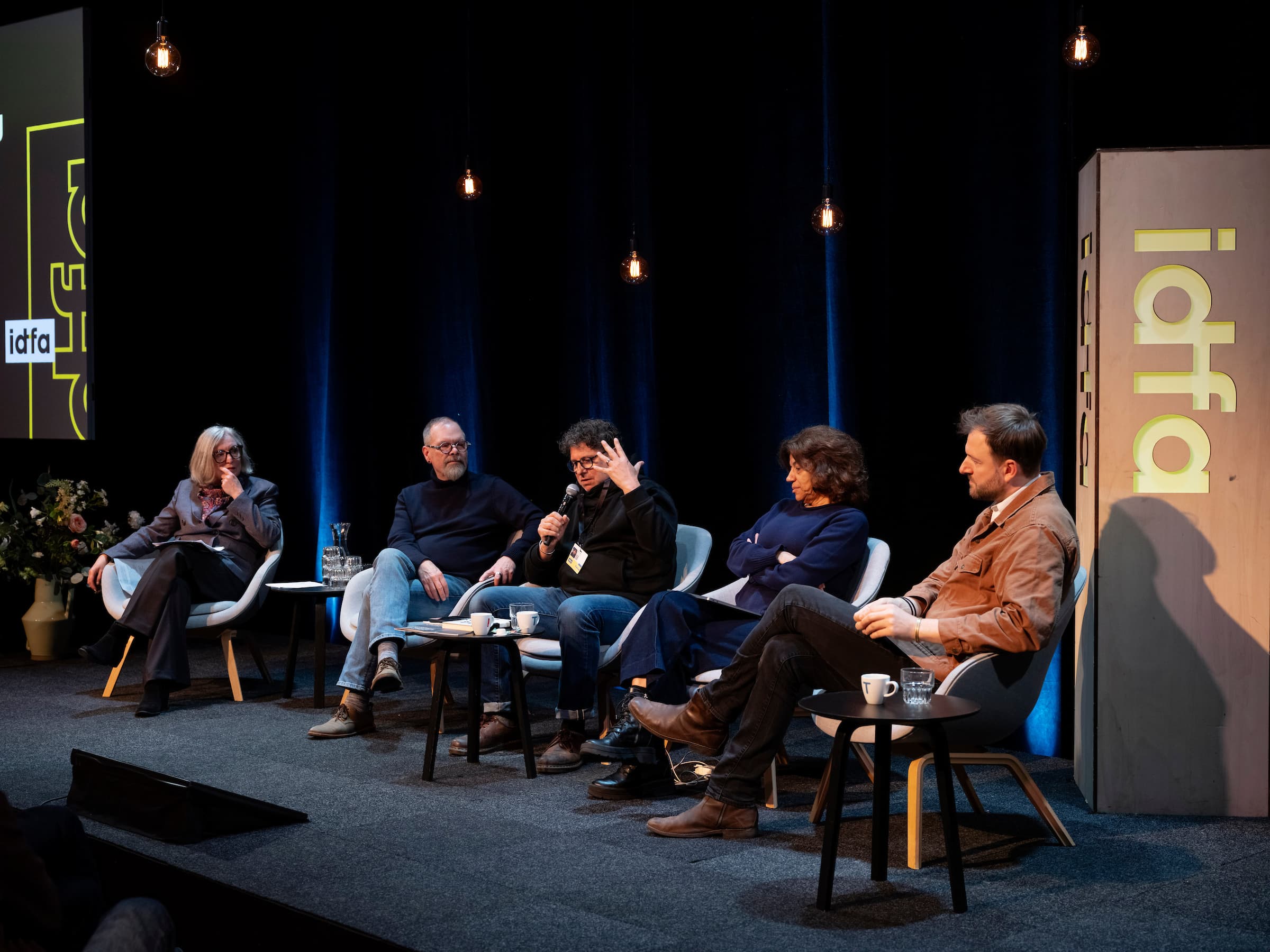
Industry Talk: Who’s watching whom - Documentary and AI
The Industry Talk on documentary and AI took place on November 15, weighing in on the opportunities and ethical ramifications of the use of this technology in non-fiction film.
“There is the good, the bad, and the ugly when it comes to artificial intelligence, and today we are going to talk mostly about the good,” said Elizabeth Klinck (E Klinck Research) who moderated the Industry Talk: Who’s watching whom - Documentary, AI and ownership of the image. The discussion was joined by filmmakers who have utilized AI for various purposes in their work, including David France (Free Leonard Peltier at IDFA 2025), Marc Isaacs (Synthetic Sincerity at IDFA 2025), Eugen Bräunig (Houseguest Pictures), and this year’s IDFA Guest of Honor Susana de Sousa Dias (Fordlândia Panacea, Post Criminal Case, see her Retrospective).
Industry Talk: Who’s watching whom - Documentary, AI and ownership of the image
Investigative reporter and filmmaker France opened the discussion, reflecting on the use of an AI tool in his 2020 film Welcome to Chechnya, which follows an underground network of activists who help LGBTQ+ Chechens escape what he described as an ongoing “murderous campaign” launched by the republic’s regional leader Ramzan Kadyrov in the south of Russia. “It was a story that needed to be told, but one that was hard to tell,” France noted, as these individuals faced grave danger. This led to the team’s efforts to anonymize the protagonists, recruiting another 23 people—mostly from queer activist communities in New York—“to lend their faces” to shield the vulnerable persons.
Bräunig, who collaborated with France on the documentary, further explained the tool that used deep machine learning to superimpose the “donors’” faces on the people in the film acted as “a glove that is latching onto the anatomy of the original face,” mimicking its facial expression. Unlike deepfakes, however, it had different ethical considerations, including a multi-stage informed consent from the film’s participants and “audience debriefing.” France noted that while there was not explicit “machine learning” label in the film, providing only a brief note that the protagonists “have been digitally disguised”, the replaced faces had softened edges around them, creating a sort of halo effect, which signaled to the audience about the manipulation and offered “a sense of relief” that the film did not expose the individuals to further risk.
In this vein, Bräunig, emphasized that maintaining a social contract and trust with audiences was one of the factors that guided the Archival Producers Alliance’s (of which he is a member) decision to publish Best Practices for Use of Generative AI in Documentaries in 2024. “Some filmmakers have suddenly realized that generated images started to slip in. And we realized: It’s really the Wild West. Is anybody tracking this? What’s our process here?” he said. In the climate when the production of synthetic images is outpacing “real” images and in the absence of a specific regulating body, there is a need to impose certain standards on ourselves “to hold ourselves accountable as storytellers, newsmakers, and image-makers,” he added, noting that these guidelines are not prescriptive, rather they present a set of ideas to consider, questions to ask oneself, and ways to communicate its use with the audience.
Expanding on this conversation, de Sousa Dias addressed the tension between archive footage and AI. Known for her singular approach to archival images and the work that interrogates not only with what is visible but also what was never recorded or was effaced, de Sousa Dias discussed how AI entered the field with a promise “to fill the gaps of our visual memory,” and even to reconstruct “missing frames, voices, and bodies.” However, AI, she argued, “is not an innocent tool,” which may put in peril the documentary status of images and their capacity to act as traces and testimonies, while also posing a risk that some viewers may start taking “fake” archival footage at face value, or on the other hand, cease to believe all visual evidence altogether. “In both cases, our regime of truth is completely shaken,” she remarked, noting how each technical rupture perpetually confronts us with a choice: to either reinforce the existing systems of exploitation and extraction or “undo those regimes and create new spaces of experience and thoughts.”
Meanwhile, Isaacs opened the conversation to the intriguing creative possibilities of AI by reflecting on the process of making his latest film Synthetic Sincerity, which explores if AI characters can be taught authenticity, featuring an AI avatar conjured in collaboration with Romanian actress Ilinca Manolache, best known for her work with auteur Radu Jude. Continuing his engagement with questions of documentary truth and performance, as observed in his earlier works The Filmmaker’s House and This Blessed Plot, though pursuing different thematic concerns, in this hybrid film, Isaacs probes the evolving relationship between machines and humans, and how AI may reshape our view of human faces.
